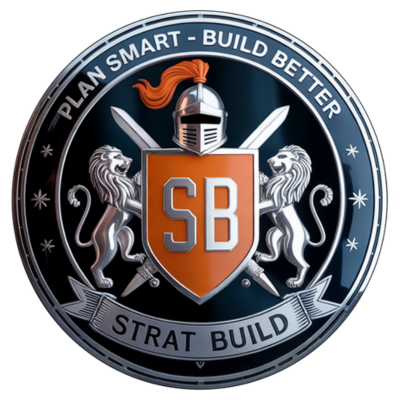
Implementing a Construction Project Plan: A Comprehensive Guide
Introduction
The construction industry is characterized by its complexity, high capital investment, and the critical importance of delivering projects on time, within budget, and to the requisite quality standards. The successful implementation of a construction project plan is pivotal to achieving these objectives. This report provides an in-depth, evidence-based guide on how to implement a construction project plan, synthesizing insights from recent research, industry best practices, and case studies. The report emphasizes the integration of advanced planning techniques, digital tools, stakeholder engagement, and risk management to ensure robust project execution.
1. Understanding Construction Project Planning
1.1 Definition and Importance
Construction project planning is the systematic process of organizing and coordinating resources, activities, and timelines to achieve specific project objectives. It encompasses the identification of project goals, scope, resource requirements, and the establishment of a detailed roadmap to guide project execution (Summit Reconstruction & Restoration, 2021). Effective planning is not merely a preparatory step but a dynamic, ongoing activity that underpins every phase of the project lifecycle.
1.2 Key Objectives
- Alignment with Client Vision: Ensuring the project’s objectives are in harmony with the client’s expectations and feasibility constraints.
- Resource Optimization: Strategic allocation and management of labor, materials, equipment, and finances.
- Risk Mitigation: Proactive identification and management of potential risks.
- Quality and Safety Assurance: Adherence to regulatory standards and best practices.
- Efficient Scheduling: Timely completion of project milestones and deliverables (CCR, 2024).
2. Stages of Construction Project Planning
The implementation of a construction project plan can be broadly divided into the following stages:
| STAGE | KEY ACTIVITIES |
| Initiation | Stakeholder engagement, requirements gathering, feasibility analysis |
| Planning | Scope definition, resource planning, scheduling, risk assessment |
| Execution | Mobilization, task coordination, quality and safety management |
| Monitoring & Control | Progress tracking, performance measurement, change management |
| Closure | Handover, documentation, post-project evaluation |
3. Step-by-Step Implementation of a Construction Project Plan
3.1 Stakeholder Engagement and Requirements Gathering
The foundation of a successful project plan lies in comprehensive stakeholder engagement. Early involvement of all relevant parties—including clients, designers, contractors, regulatory authorities, and end-users—ensures that requirements are accurately captured and expectations are aligned (ProjectManager, 2024). This phase should include:
- Workshops and interviews to clarify project objectives.
- Identification of key performance indicators (KPIs).
- Establishment of communication protocols.
3.2 Defining Project Scope and Objectives
A well-defined project scope prevents scope creep and sets clear boundaries for project deliverables. This includes:
- Detailed work breakdown structure (WBS).
- Clear delineation of responsibilities.
- Documentation of project constraints and assumptions (Summit Reconstruction & Restoration, 2021).
3.3 Resource Planning and Allocation
Efficient resource management is critical to project success. This involves:
- Estimating quantities and types of resources required.
- Developing a resource allocation matrix.
- Anticipating potential shortages and developing contingency plans.
- Leveraging construction management software for real-time resource tracking (TRC Companies, 2024).
3.4 Scheduling and Sequencing
A robust schedule is the backbone of project execution. Best practices include:
- Utilizing Gantt charts and Critical Path Method (CPM) for task sequencing.
- Identifying task dependencies and milestones.
- Incorporating buffers for potential delays.
- Regularly updating the schedule to reflect actual progress (ProjectManager, 2024).
3.5 Cost Estimation and Budgeting
Accurate cost estimation is essential to avoid overruns. This process should include:
- Detailed quantity take-offs.
- Unit cost analysis.
- Inclusion of contingencies for unforeseen expenses.
- Ongoing cost tracking and variance analysis (Summit Reconstruction & Restoration, 2021).
3.6 Risk Management
Construction projects are inherently risky due to factors such as weather, supply chain disruptions, and regulatory changes. Effective risk management involves:
- Developing a comprehensive risk register.
- Conducting qualitative and quantitative risk assessments.
- Formulating mitigation and contingency strategies.
- Regular risk reviews and updates (ProjectManager, 2024).
3.7 Quality and Safety Planning
Quality and safety are non-negotiable in construction. Implementation steps include:
- Establishing quality control protocols in line with standards (e.g., ISO, AS 4801).
- Conducting regular site inspections and audits.
- Implementing safety training and incident reporting systems (CCR, 2024).
3.8 Communication and Collaboration
A well-structured communication plan is vital for keeping all stakeholders informed and engaged. Key elements:
- Regular progress meetings and reporting.
- Use of digital collaboration platforms for document sharing and updates.
- Transparent issue escalation and resolution mechanisms (ProjectManager, 2024).
3.9 Leveraging Technology
Modern construction planning is increasingly reliant on digital tools:
- Building Information Modeling (BIM): Facilitates coordination, simulation, and visualization.
- Project Management Software: Enables real-time tracking, resource management, and collaboration.
- Automation and Data Analytics: Improve decision-making and efficiency (Neuroject, 2025).
4. Best Practices and Lessons from Case Studies
4.1 Integration of Lean Principles
Lean construction methodologies emphasize waste reduction, continuous improvement, and stakeholder alignment. Key planning steps for Lean implementation include:
- Determining the project delivery method.
- Organizing the project team.
- Conducting a formal Lean kick-off.
- Selecting Lean methods for implementation.
- Developing a project-specific Lean plan.
- Tracking alignment and continuous improvement (Lean Construction Journal, 2021).
4.2 Real-World Success Stories
Burj Khalifa, Dubai
- Value: $1.5 billion
- Success Factors: Advanced scheduling, phased execution, strong stakeholder engagement, innovative risk management (INC Foundation, 2024).
Panama Canal Expansion
- Value: $5.25 billion
- Success Factors: Environmental risk mitigation, complex engineering solutions, robust project controls.
Shanghai Tower
- Value: $2.2 billion
- Success Factors: Sustainability, innovative design, and adaptive project management.
These projects underscore the importance of meticulous planning, stakeholder collaboration, and adaptability in achieving project success.
5. Continuous Monitoring and Adaptation
A construction project plan must be treated as a living document. Continuous monitoring, performance measurement, and adaptation are essential to respond to evolving project realities. Key actions include:
- Regular progress reviews against KPIs.
- Use of dashboards and real-time reporting tools.
- Prompt identification and resolution of issues.
- Post-project evaluation to capture lessons learned (ProjectManager, 2024).
6. Conclusion and Recommendations
Implementing a construction project plan requires a structured, disciplined approach that integrates advanced planning techniques, digital tools, and best practices from leading projects worldwide. The evidence strongly supports the adoption of collaborative, technology-driven methodologies and continuous improvement frameworks such as Lean construction.
Concrete Opinion:
Based on the synthesis of recent research and industry case studies, the most effective approach to implementing a construction project plan is one that prioritizes early and ongoing stakeholder engagement, leverages digital tools for real-time management, and adopts a flexible, adaptive mindset. Projects that rigorously apply these principles consistently outperform those that rely on traditional, static planning methods.
References
- CCR. (2024). Understanding Construction Programming and Planning. CCR Work. https://ccr.work/understanding-construction-programming-and-planning/
- Egbebi, A. O. (2024). Best Practices for Efficient Project Planning and Scheduling in Construction Management. International Journal of Research Publication and Reviews, 5(7), 440-449. https://ijrpr.com/uploads/V5ISSUE7/IJRPR31258.pdf
- JUSST. (2025). EFFECTIVE PROJECT MANAGEMENT STRATEGIES IN CONSTRICTION BUILDINGS. Journal of University of Shanghai for Science and Technology, 27(2). https://jusst.org/wp-content/uploads/2025/02/EFFECTIVE-PROJECT-MANAGEMENT.pdf
- Lean Construction Journal. (2021). Key Planning Steps Enabling Systematic Lean Implementation on Construction Projects. https://leanconstruction.org/wp-content/uploads/2022/08/LCJ_21_003.pdf
- Neuroject. (2025). 4 Case Studies of Successful Smart Construction Solutions. Neuroject. https://neuroject.com/successful-smart-construction-solution/
- ProjectManager. (2024). How to Make a Construction Plan: Construction Planning Basics. ProjectManager. https://www.projectmanager.com/guides/construction-plan
- Summit Reconstruction & Restoration. (2021). Construction Project Plans Explained with Example Plans. https://summitreconstruction.com/2021/01/21/construction-project-plans-explained-with-example-plans/
- TRC Companies. (2024). Planning for Construction Project Success: Common Challenges and How to Overcome Them. TRC Companies. https://www.trccompanies.com/insights/planning-for-construction-project-success-common-challenges-and-how-to-overcome-them/
- INC Foundation. (2024). Construction Projects: Insights from Top Success Stories. INC Foundation. https://incfoundation.com/en-US/the-most-successful-construction-projects-and-their-winning-strategies/
This report is current as of June 8, 2025, and reflects the latest available evidence and best practices in construction project planning and implementation.

Strat Build Consulting
Management Team
The management team of Strat Build Consulting exemplify professionalism and extensive experience in the construction project management industry. With decades of hands-on expertise across all phases of construction—from strategic planning and budgeting to risk management and project delivery—they have a proven track record of successfully leading complex, high-value projects.

